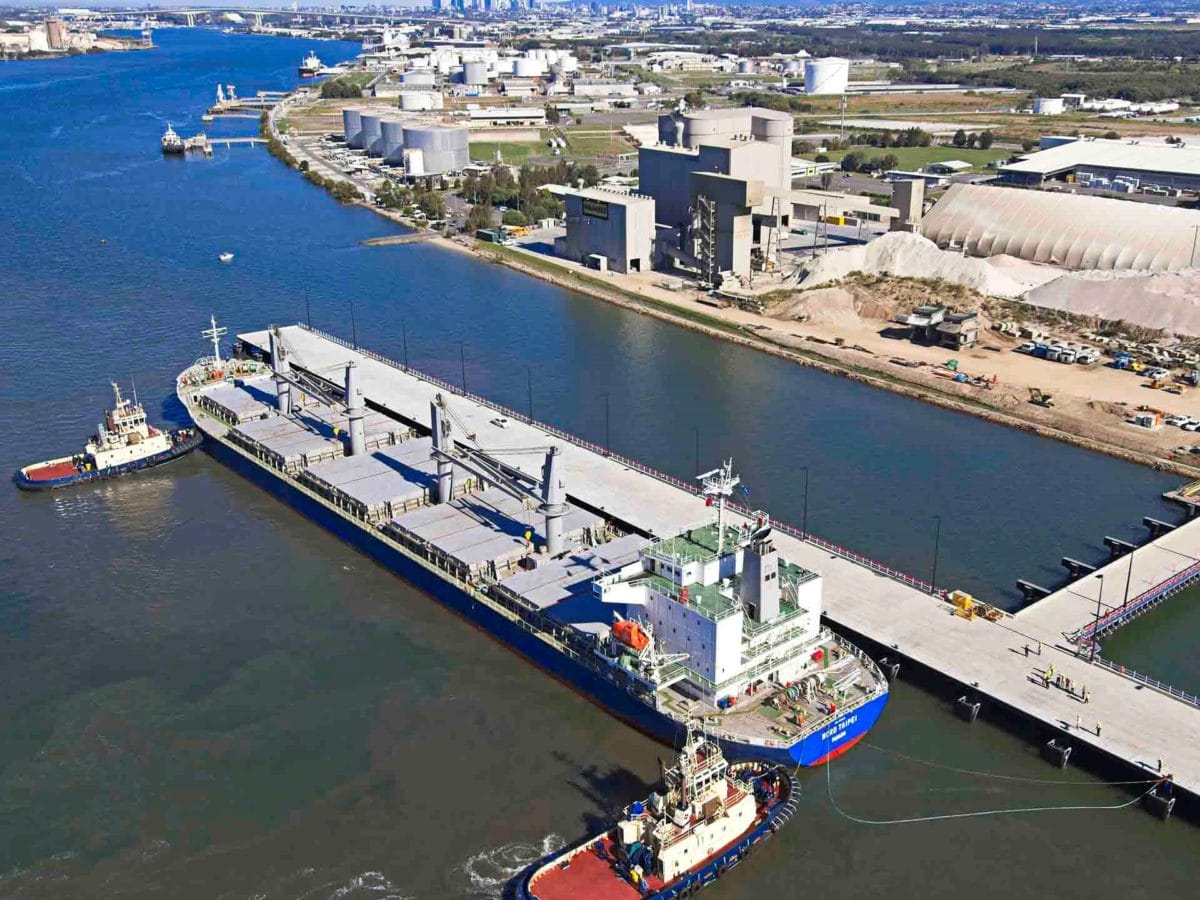“Lion remains committed to its exciting conventional oil and gas business in Indonesia,” wrote Executive Chairman Tom Soulsby in the company’s Annual Report 2020. At the same time he said, Lion Energy “is busy positioning itself at the critical juncture of resources, markets and technology in green hydrogen in Australia”.
Last week Perth-based Lion, signed a Memorandum of Understanding (MOU) with Wagner Corporation, a family-owned property and infrastructure developer and asset manager, which built, owns and runs Toowoomba Wellcamp Airport and its adjacent Wellcamp Business Park. In July 2018, Wagner Corp also completed development of the 40-tonne industrial Pinkenba Wharf, on the Brisbane River, to service cement clinker ships which provide materials to its original core business in concrete and construction materials.
The MOU agrees to “explore opportunities in the development of green hydrogen facilities and related infrastructure”, at both Pinkenba Wharf and Wellcamp Business Park locations, said an ASX announcement by Lion Energy on Thursday last week.
Lion is at pains to point out that this is a no-strings MOU, and implies no obligation to proceed to development: “The Company cautions that there can be no certainty that a suitable hydrogen opportunity will be identified.”
QUT to identify the most suited H2-production sites
To give the green hydrogen potential a thorough investigation, however, Lion Energy on Wednesday announced it had signed a service agreement with Queensland University of Technology (QUT), a forerunner in enabling Australia’s hydrogen ambitions, for deployment of its myGlobe geospatial data-visualisation software to help identify optimal locations for green hydrogen infrastructure in Queensland.
The University’s researchers are expected to combine data on solar and wind resources, surface and groundwater resources, electricity transmission, natural gas pipelines, major roads and rail connections, energy trade connections and land earmarked for or hosting industrial activities, transport hubs and ports… in their assessment of site suitability.
Soulsby was quoted in both ASX announcements as saying, “We re-emphasise the criticality of focusing our efforts at the intersection of renewable electricity and water resources, hydrogen markets and technology.”
Concrete cred
For its part, Wagner prides itself on being, “innovative, integrated and international”. It has operations in eight countries, and is a key player in the Queensland industrial landscape, frequently demonstrating cutting-edge, low-emissions materials developed by its New Generation Building Materials division in its own industrial real-estate constructions.
It has devoted years to developing and achieving building certifications for its Earth Friendly Concrete (EFC), a geopolymer material that offers higher structural performance than conventional concrete as well as an 80% reduction in the CO2 emissions of the traditional cement-based concrete.
In 2014 it used EFC in construction of its Brisbane West Wellcamp Airport — in 51,000 m² of heavy duty pavements for turning nodes and taxiways, as well as in the foundations, wall panels and entry bridge of the terminal building. In that project it says it achieved a saving of some 8,800 tonnes of CO2 by using EFC instead of conventional materials.

Image: Wagners
Wagner Corp’s construction of Pinkenba Wharf also included precast EFC sections, structurally strengthened with the company’s fibre-reinforced plastic (FRP) bars. The use of these materials had advantages over conventional steel and concrete construction for a marine environment and also resulted in “vastly reduced embodied carbon”, the company reported.
Wagners, as the corporation’s construction arm (invested in cement, fly ash, quarries, mobile crushing and concrete plants, and more) is known, was also the contractor for concrete wind turbine foundations at Coopers Gap Wind Farm (123 turbines) in Kingaroy, Queensland; and Sapphire Wind Farm (75 turbines) at Glen Innes in New South Wales.
Well-matched partners in decarbonisation?
Unavailable for comment today, Wagner Corporation is its own industrial ecosystem, potentially ripe for using green hydrogen in its production processes, and to drive its transport fleet. The company’s most recent Annual Report says that in FY2020 its transport team hauled 5.5 million tonnes of product and travelled more than 6.8 million kilometres.
Lion Energy, in the meantime, sees “a material ongoing role for oil and gas in the global energy mix over the coming decades”, but says in its 2020 Annual Report that the board “has made a strategic decision to explore energy sector diversification and opportunities in the potentially disrupting green hydrogen gas/liquids business”. In mid-2021, it has begun executing on that plan.
This content is protected by copyright and may not be reused. If you want to cooperate with us and would like to reuse some of our content, please contact: editors@pv-magazine.com.









By submitting this form you agree to pv magazine using your data for the purposes of publishing your comment.
Your personal data will only be disclosed or otherwise transmitted to third parties for the purposes of spam filtering or if this is necessary for technical maintenance of the website. Any other transfer to third parties will not take place unless this is justified on the basis of applicable data protection regulations or if pv magazine is legally obliged to do so.
You may revoke this consent at any time with effect for the future, in which case your personal data will be deleted immediately. Otherwise, your data will be deleted if pv magazine has processed your request or the purpose of data storage is fulfilled.
Further information on data privacy can be found in our Data Protection Policy.